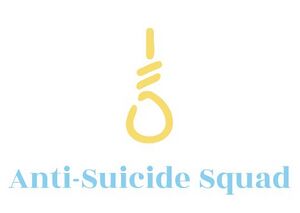Difference between revisions of "Group04 proposal"
| Line 61: | Line 61: | ||
</center> | </center> | ||
|| | || | ||
| − | *This is | + | *This is a visualisation showing suicide rates per 100,000 people by country (1978-2009). It is good practice to use the world map to show each country's suicide rate. |
<br/> | <br/> | ||
*The visualisation's colour usage is pretty messy. It is hard for the user to capture insightful information at first glance. | *The visualisation's colour usage is pretty messy. It is hard for the user to capture insightful information at first glance. | ||
Revision as of 15:00, 1 March 2020
Proposal
|
Close to 800 000 people die due to suicide every year, which comes up to one every 40 seconds according to the World Health Organisation (WHO). Suicide is a global phenomenon, present in many countries and is pervasive to people from all walks of life. For example, South Korea, despite being one of the fastest growing developed countries in the world, has the highest suicide rate in the world. What is more worrying is that the rate of suicides is increasing. In the last 45 years, suicide rates have increased by 60% worldwide and is now the second leading cause of death among young people after road injury.
Every life is precious. The numbers in the dataset was once a person who took their own lives, and had a ripple effect affecting their loved ones, family and friends. Our group would like to analyse factors such as gender, age, generation and GDP per capita to better understand the demographic of those who are likely to commit suicides, so that organisations such as Samaritans of Singapore or even schools and companies can identify those that are of higher risk and take measures to mitigate the likelihood of suicides for those people.
- To analyse suicide rates over the years, from 1987 to 2016.
- To analyse and compare which between regions, to identify which are the most and least impacted.
- To understand how significant each factor (age, gender, etc.) affects suicide rates.
- To discover which demographic are more likely to commit suicide.
| Dataset/Source | Data Description |
|---|---|
(https://www.kaggle.com/russellyates88/suicide-rates-overview-1985-to-2016) |
|
| Example | Takeaways |
|---|---|
|
|
|
|
|
|
|
|
|
|
|
|
References for Dataset
- United Nations Development Program. (2018). Human development index (HDI). Retrieved from http://hdr.undp.org/en/indicators/137506
- World Bank. (2018). World development indicators: GDP (current US$) by country:1985 to 2016. Retrieved from http://databank.worldbank.org/data/source/world-development- indicators#
- [Szamil]. (2017). Suicide in the Twenty-First Century [dataset]. Retrieved from https://www.kaggle.com/szamil/suicide-in-the-twenty-first-century/notebook
- World Health Organization. (2018). Suicide prevention. Retrieved from http://www.who.int/mental_health/suicide-prevention/en/
References for Visualisation
- https://en.wikipedia.org/wiki/List_of_countries_by_suicide_rate#/media/File:Sucide_rate.PNG
- https://en.wikipedia.org/wiki/Epidemiology_of_suicide#/media/File:Suicide-deaths-per-100000-trend.jpg
- https://en.wikipedia.org/wiki/Epidemiology_of_suicide#/media/File:Suicides_by_race_hispanic_gender_and_age_1999-2005.png
- https://www.dailymail.co.uk/news/article-2743457/WHO-calls-action-reduce-global-suicide-rate-800-000-year.html
| No. | Challenges | Mitigation Plan |
|---|---|---|
| Inexperience with R |
| |
| Limited experience with Storyboard in Tableau |
| |
| Workload constraint since our group consists of 2 members |
|
Feel free to leave your comments! :)





